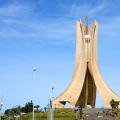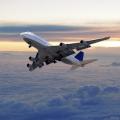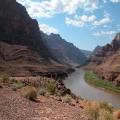The questions about the possibility of existence in Southern hemisphere hitherto unknown continents. Their searches led to important ones.
Discovery and exploration of Australia and Oceania
Unknown Southern land- Terra australis incognita - Portuguese, Spanish, Dutch, British searched. In 1642, the Dutchman Abel Tasman proved the existence of southern mainland, going along its entire northern coast. For a long time, the Dutch managed to keep this discovery a secret. The secret was revealed by the English navigator.
As Menzies puts it in his book, the Chinese did not find so much interesting in America, because China was an age-old culture that had almost everything. However, they took copper in Brazil and the United States, hunted animals in Patagonia, and classified woody trees in The Caribbean... They dedicated themselves to harvesting and bearing crops, which explains why corn was famous in China three centuries before Europeans wore it, and also why America would have rice and other foods that are native to Asia.
Other evidence Menzie brings up include Ming Dynasty sculpture found in Kenya and porcelain specimens found in places like Peru and California. However, the official history of China notes that Zheng He only studied Indian Ocean reaching so far from East Africa and even as far as the Mozambique Canal. No longer travel records. Menzies claims that when Emperor Zhu Di's term ended, a group of people with some political power called the Mandarins took control of the situation and, given their rivalry with the previous government, burned all the records of the fantastic journey.
Cook's travels confirmed the presence of the mainland, gave more accurate information about the outlines The Pacific and its islands.
Discovery and exploration of Antarctica
In 1819-1821, Russian sailors F.F. Bellingshausen and M.P. Lazarev made the most outstanding scientific expedition to V. Its goal was to explore the waters of Antarctica and find land at the South Pole of the Earth.
Unfortunately, many documents and maps of these expeditions were destroyed, only a few people survived. Recently, Liu Gang, a commercial lawyer, revived a controversial theory with finding other cards. The Ganges claims that the famous Chinese sailor Zheng He circled the world and "discovered" America before Christopher Columbus did. In other words, haven't any of the great researchers really "discovered" anything new? Even in some of these maps, the one that will be the Island of Puerto Rico appears. Will Puerto Rico Really Be Map Island?
On the sloops "Vostok" and "Mirny", the members of the expedition on January 28, 1820 approached the ice wall, which blocked the further route to the south. These were the ices of the southern continent. January 28, 1820 is considered the date of the discovery of the last, sixth - Antarctica.
Thus, by the beginning of the 19th century, all the continents of the Earth were discovered. The time of travelers and explorers was a thing of the past, the time of scientists and geographers was coming.
In this case, did the Chinese come to Borinken before Spain? The academic community believes that Menzies' claims are purely speculative and not based on specific facts. Others also question the found maps, claiming that they are too accurate for their period. On the other hand, being a Chinese civilization sufficiently comprehensive and thorough in their records, it doesn't make sense that they testify to half of their travels. At this moment, every hypothesis exists; it is nevertheless necessary to point out that these maps are original and real.
The first Russian round the world trip
In 1803-1806, the first Russian round the world expedition under the command of I.F. Kruzenshtern and Yu.F. Lisyansky. The ships "Nadezhda" and "Neva" crossed Atlantic Ocean”And then, having rounded Cape Horn, went to. During the voyage, descriptions were made of all the harbors and islands where there were parking, new islands, straits, reefs, capes were plotted on the maps. Naturalists observed sea currents, ebbs and flows, measured at different depths. The customs, beliefs and languages of the Pacific islanders were studied. Howl collected valuable botanical and zoological collections.
Until now, there is not a single known archaeological trail indicating the presence of China in Puerto Rico before the arrival of Columbus. Nor would it be fair to abandon the new theoretical approaches of the British admiral. It takes much more than a map to unfold and transform a story so complex.
Thus, we are celebrating the anniversary of America's famous "Discovery", "Columbus Day" or "Race Day" as it is fashionable to call it in the United States, especially among the Latin American community. This is, with the full intention of concealing, concealing and minimizing the crimes committed. However, celebrating the so-called "discovery" of America and theorizing who came first, be it Chinese or Christopher Columbus, means abandoning the fact that there were more than one hundred million people who had already discovered the continent and lived peacefully in it.
First circumnavigation laid the foundation for a new science - oceanology. Compiled by I.F. Kruzenshtern "Atlas southern seas»For many years has become a guide for all sailors, whose ships plowed the waters of the Pacific Ocean and the southern latitudes of other oceans of the Earth.
1One of the brightest and most exciting is the discovery of a new world - America. Navigator Christopher Columbus set off in search of a sea route from the European part of Eurasia to the Indian shores. In 1492, the ship landed on the shores of the picturesque island. Columbus believed that the team arrived at Indian coast... Because of the confidence of the navigator, the natives of America - the Indians - got their name. Columbus and the sailing team were terribly disappointed in their find. Trade with local residents was not promising. And only at the beginning of the 16th century, the navigator Amerigo Vespucci discovered for the inhabitants of Europe New World... He guessed that Columbus, on his expedition, had mistaken America for the coast of India.2 The acquaintance with the African continent was less intriguing. The inhabitants of Eurasia knew about the existence of Africa from time immemorial. Vasco da Gama is considered the first European pioneer in Africa. In 1497, the seafarer's ship left Lisbon towards India. The navigator was the first of the Europeans to cross the sea to India, while circling the African continent. Along the way, Vasco da Gama explored the coast of Africa and made a lot of discoveries. 3 In November 1605, the navigator Willem Janszon set off on his ship towards the island of New Guinea. Approaching the coast, the traveler did not notice anything strange. At first he decided that he had reached the desired island. But, stepping on the damp swampy coast, the navigator suspected that these lands were not at all what he was looking for. The indigenous population of the island met the uninvited guests, to put it mildly, unfriendly. Then the sailors realized that they had moored to the shores of a completely foreign land. The island that hosted travelers turned out to be New Zealand. Willem Jansson is recognized as the first European to visit Australian shores. significant discoveries in the era of the Great geographical discoveries humanity did not even think that unknown continents remained on the planet. However, in January 1820, an expedition of Russian explorers under the command of Thaddeus Bellingshausen sailed towards the south pole of the earth. Unexpectedly for themselves, the members of the expedition discovered a hitherto unknown continent. The continent, covered with a thick crust of ice, seemed dead to the mariners. The last discovered continent of our planet was named Antarctica.5 The magnificent epoch undoubtedly became one of the most significant expanses of the Earth in human exploration. Talented navigators and researchers have made an invaluable contribution to the development of science and the worldview of all mankind.
Every student knows the answer of color: the navigator of Genoa Christopher Columbus landed on the islet of Central America on October 12. Since then, Europeans of different latitudes have crossed the Atlantic Ocean, invaded the continent, killed each other and the originals, took responsibility and shaped what they saw at will. But the books of Histria often forget to mention that before Columbus, other Europeans ventured across the Atlantic beyond unknown lands.
The ruins, unearthed in the 1960s by a pair of Norwegian archaeologists Helge and Ann Ingstad, proved the presence of the Vikings, known throughout the rest of Europe as a barbaric people who terrorized the culture of what is now Britain, France, Germany and northern Spain. Vikings' walks across the North Atlantic should not be forgotten, but they do not take from Columbus the title of European discoverer of the New World.




